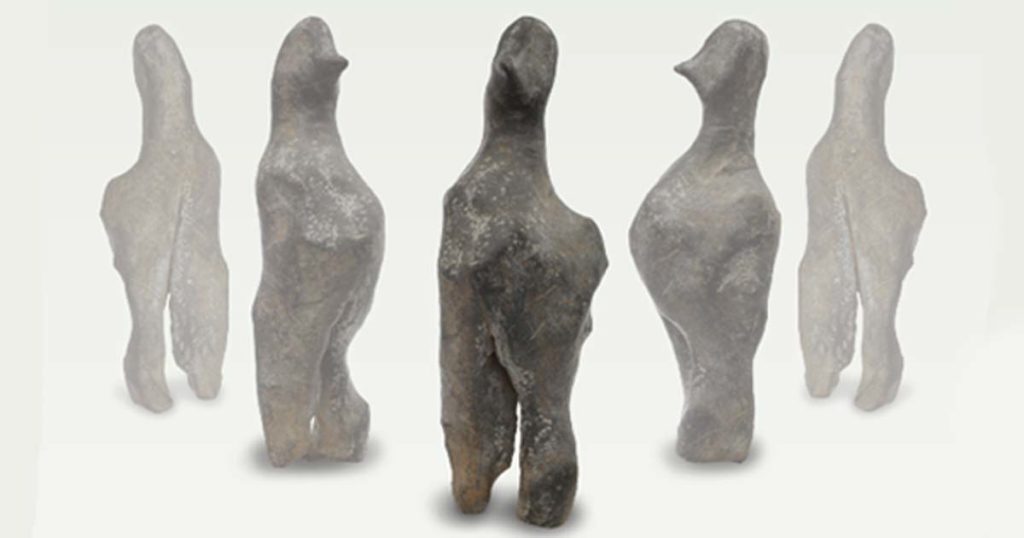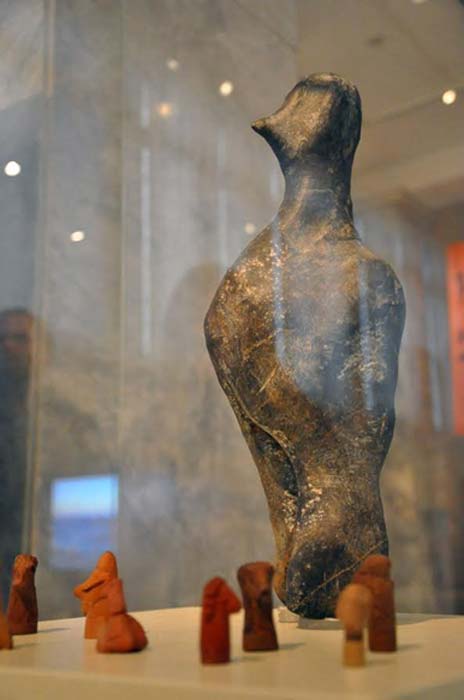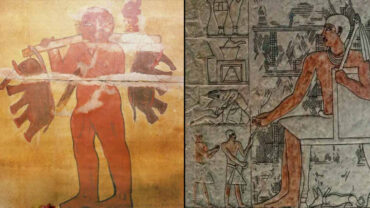A 7000-Year-Old Neolithic-Era Bird-Like Sculpture From A Personal Collection Has No Recognized Origin
A unique 7000-year-old Neolithic bird-like figurine has perplexed Greece archeologists, who have no idea where it came from, why it was constructed, or who made it.
A bird-faced sculpture was on display at the National Archaeological Museum in Athens in 2017 as part of a project called “The Unseen Museum,” which featured about 200,000 ancient objects ranging from statues to household utensils to golden decorations.
The 36-centimeter granite figurine was found accompanied by a more traditional Neolithic statue: little ceramic and soft stone figurines.

The little figurine, discovered in the storerooms and shown in a brightly illuminated display case, lacks the majesty of Classical Greece’s marble and bronze statues.
The antique statuette’s origin is unknown: it arrived at the museum from a private collection, but no one knows where it was discovered. The statuette could have come from Thessaly or Macedonia in northern Greece, according to scientists.
The figurine could date from the Late Neolithic period, with a range of dates ranging from 4500 to 3300 BC. However, unlike the vast majority of sculptural works of the time, the figurine with a bird face was carved from stone, not the soft flexible rock-like limestone of the time, but firm granite. Furthermore, in the Neolithic age, there were no cutting tools suited for processing hard rocks.
The majority of Neolithic statues were tiny in scale: only 5% of documented Neolithic stone figures exceed 35 cm in height, and they’re all composed of soft rocks.

The seated mother goddess statue from Catal Huyuk, Turkey, for example, is crafted of a local marble variety, weighs one kilogram, and is barely 17 cm tall.
“It could depict a human-like figure with a bird-like face or a bird-like entity that has nothing to do with man but with the Neolithic society’s ideology and symbol,” said Katya Manteli, a museum archaeologist.
The granite figurine’s face is eerily similar to that of a bird, with a pointed beak, big hollows for eyes, and a lengthy neck. The elegant top gives way to an enormous, elephant-like bottom. The figure’s back is excessively flat and straight, with a long neck flowing into a rounded belly.
There was no apparent evidence of the enigmatic creature’s gender. Was it due to the architect’s inadequate technical ability? Or was he striving to build an asexual figure?
“Yes, that could be a pregnant figure, but there are no breasts, which were utilized to depict the female form in Neolithic times.” However, because it lacks masculine genitalia, it is shown as an asexual figure,” Manteli explained.
The figurine was polished, which suggests it was a completed statue, according to researchers. However, there were certain rough parts on the statue where the stone’s original color could be seen.
All of these peculiarities, according to Manteli, make the granite figurine one of the Neolithic era’s rarest relics.



